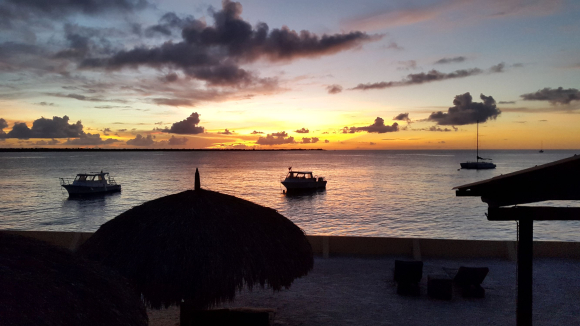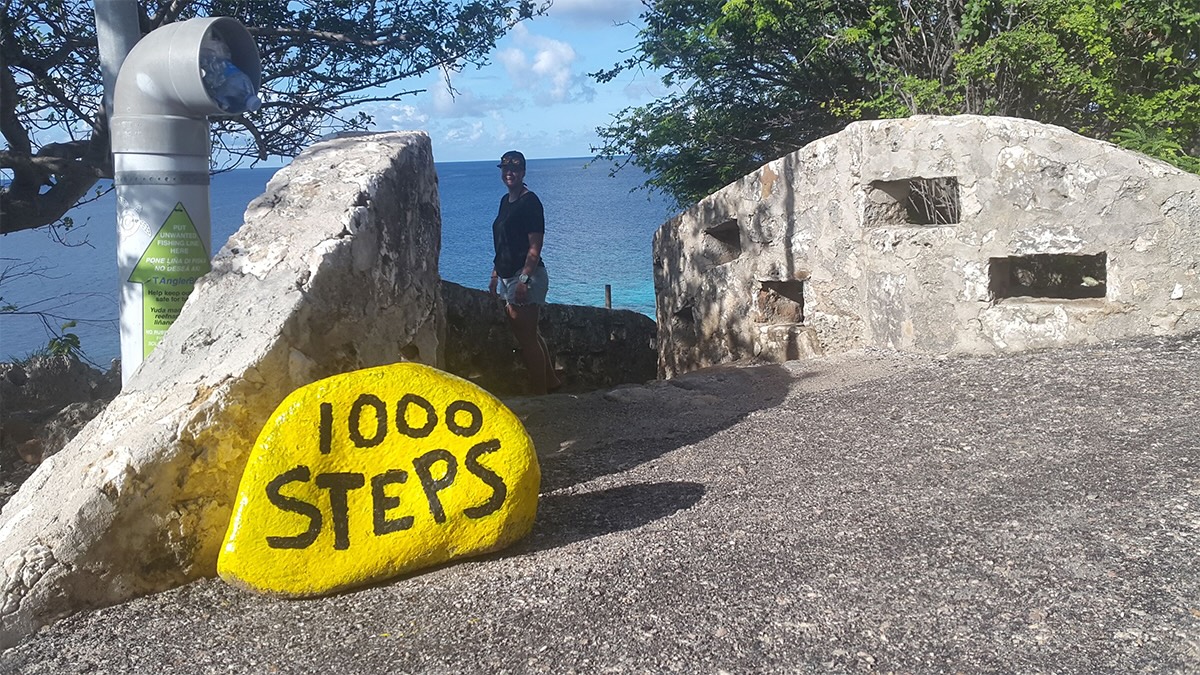What is diving on Bonaire...
... and where the hell is it?, perhaps most people ask, at least not divers or people without roots in the Netherlands.
Netherlands Antilles... hmm, take out the map book or google map and you'll find it Bonaire just north of Venezuela in South America. It is a small group of islands (There are a few more islands further north also included) consisting of Aruba, Bonaire and Curaçao or the ABC Islands. So what is diving on Bonaire?
Over the years, Bonaire has consistently held one of the top spots for the world's most popular diving destinations. This is where the concept of drive and dive came into existence and it is not for nothing that even the number plates on the cars have the text "Divers paradise" on! I wonder if there is any other place in the world where diving is so easy and accessible!
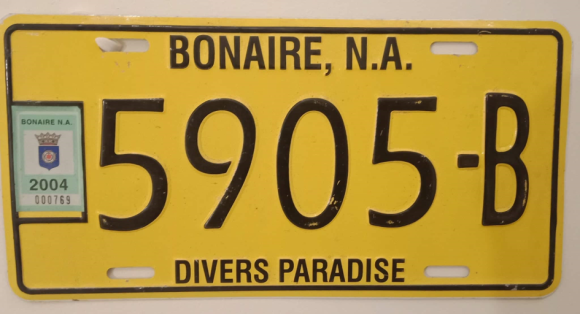
Welcome to a Pink Airport
When you get here, you land on Flamingo airport.... well, it's actually called that and of course the airport is completely PINK!!! If you like it, of course, but it cuts a bit the first time you see the small terminal. From here it is not far to where you will live, Bonaire as an island is small, really small, you go around the whole island in "outside laps" excluding the national park in the north in about 4-5 hours.
The island is barren, more like a scorched Mediterranean landscape rather than a tropical environment. It doesn't rain much here and you can go here all year round even when it rains, but then it's wet, really wet and the dry ground has a hard time absorbing water. There are many good diving resorts here or, if you want, you can also rent houses or apartments. However, common to all places is that you must have a car!!!
Renting a car here is easy and you can either collect it directly at the airport upon arrival or you will be able to collect it at your diving resort depending on where you live.
Drive and dive
The concept then is simple as said; drive and dive! You load your car with diving equipment and then you drive around the island and visit the dive sites that are marked on maps and are usually easy to find as there are chicken yellow stones placed where the dive sites are and the name of the dive site is written in black.
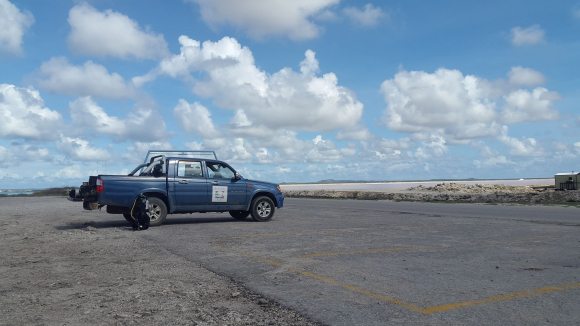
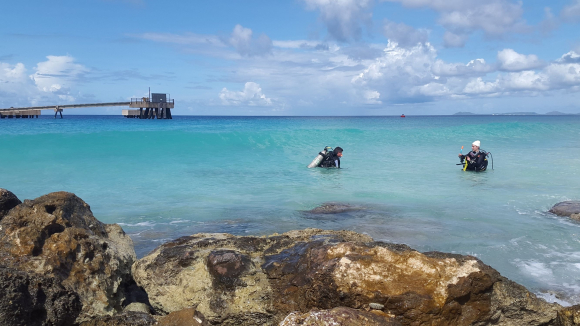
The simplicity is absolutely fantastic to take care of yourself. You don't have to meet times, you can dive as much or as little as you want and when you want. Choose a dive site and go there. If there are too many others there already, like 3-4 cars.... and it feels "crowded", you can always choose the next dive site a little further away. Put your diving gear together and get in the water and dive and enjoy.
Here you will find almost crystal clear Caribbean water with very different types of bottom. Everything from walls of coral and stone, to a clean sandy bottom, but the most common are slopes that make diving easy and comfortable. Even beginners can handle this type of diving with flying colours. It doesn't get any easier than this, go in, follow the reef, turn and swim back. Try to come up roughly where you went in. Most dive sites are easy to navigate. Others require a little more feeling for where you are and how far you swam. If you make a mistake, swim or dive back to your take-off point and then load the car and head to the next dive site.
The diving
What do you see here then?, well typical Caribbean diving with usually good or very good visibility, 30-40 meters is not unusual. To that corals and many kinds of sponges, but here is also the Hilma Hooker wreck, which is a popular diving spot. If you're lucky, you can see a lot of big fish here. on Bonaire but it takes a bit of luck.
Whale sharks, mantas, eagle rays, dolphins, nurse sharks, bull sharks, barracudas and several other large fish, but also turtles most often. Also, don't miss the big Tarpons, big silvery fish up to 2 meters in length, which sometimes scare divers but are completely harmless.
In addition, lots of different smaller species such as parrotfish, emperor and butterflyfish, squirrelfish, soldierfish, frogfish, seahorses, blennies, gobies, scorpionfish, parrotfish, surgeonfish, boxfish, ladyfish. Pretty much what you see in most tropical environments but clownfish are missing. In addition to this, a number of invertebrates such as crustaceans, echinoderms, mollusks and more.
Invasive dragonfish
Unfortunately, the invasive dragonfish has also arrived here and they are working hard to keep tabs on the stock. If you want to get a certificate in how to hunt and collect dragon fish and then get to eat it, that is also an option.
The colors under the surface are not quite as intense on fish and coral as in, for example, Southeast Asia or the Maldives and not quite as rich in species, but the simplicity of the arrangement means that divers from all over Europe and North America go here again and again and Bonaire has for many, many years been considered be one of the world's best diving destinations.
For those of you who live at a resort directly on the coast, it is of course possible to dive directly from shore. Then you don't always have to think about packing the car. There is also the possibility of boat diving. By car you can reach about half of all the dive sites, but by boat the range increases significantly and you also get to the small island of Klein Bonaire, which on the western outer side offers fantastic reefs and often very good visibility.
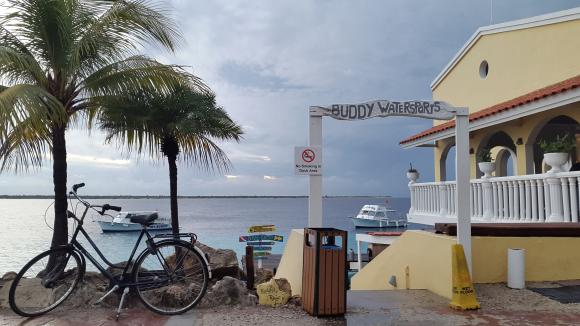
It's so simple!
The simplicity of Bonaire is precisely that you take care of yourself. Here you live, dive, eat at one of the restaurants in town and then sleep. The next day it's time to repeat. There are some beautiful environments to see on land too. Don't miss a day to Slagbaai national park up north. It is very beautiful in some places but muddy off-road. It is also possible to bring the diving equipment there as there are a couple of suitable starting points there as well. Although the north (and east) side is not directly accessible for diving. For those who want to dive a lot, take care of themselves and avoid stress, Bonaire is absolutely fantastic. 6-10 days of diving is usually enough for most people, 8-9 I think is adequate.
It's easy to tailor your trip here, flights depart almost daily. Driving is easy, a normal Swedish driver's license is enough, there is little traffic, the diving is easy and can offer something to everyone and it is entirely up to you how much you want to dive every day and whether you want only land diving or also diving by boat.

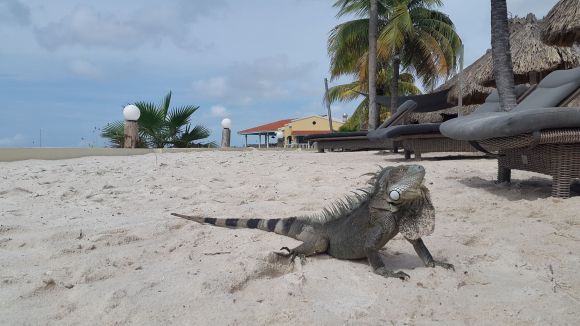
Other than diving
Apart from diving, there is not much else to do here. But if you like peace and quiet, it's easy to enjoy yourself. If you like windsurfing, which is incredibly good on the eastern side of Bonaire, or like watching birds, there is that too. Bonaire has a very rich bird life. So for bird watching it is also a good destination, fishing is also possible here. Divers Paradise really makes a case for itself. This is an island that is absolutely optimal for divers above all. But everyone can probably go here and find relaxation and enjoy even if you don't dive.
When it's time to travel home, you will surely continue to dream of the blue sea that surrounds this little tropical gem. Bonaire is definitely worth a visit at some point during your diving career. Diving on Bonaire is simply too good and convenient to miss.
Do you want to experience diving on Bonaire and the wonderful relaxation you can experience here? contact Scuba Travel directly here!
